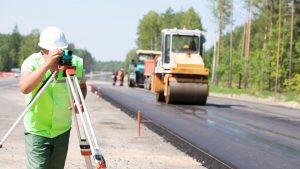One of the hottest trends in construction today is wearable technology devices. These are essentially unobtrusive sensors incorporated into headgear and safety vests, worn around the neck, attached to the wrist or in footwear — literally anywhere from head to toe. The devices go wherever the worker goes, monitoring their location, rate of movement, and perhaps even physiology.
One of the latest wearable devices is a proprietary sensor platform called SmartBoots, developed by Pittsburgh-based SolePower Inc.. “When installed in standard, OSHA-approved work boots, the system measures indoor and outdoor position, step count, speed, time spent in work areas, (and fatigue, heart rate and dehydration risk in the future),” the company says. “Data is delivered to a front-end visualization for managers to gain awareness of the workflow and status of their workforce anywhere in the world.” The company says this allows management to measure safety and productivity metrics, improve workflow transparency and safety awareness, and enhance training.
Worker monitoring does not require purpose-specific devices. Even everyday personal tech items like Fitbits and smart watches can be connected to company networks for much the same purpose.
At heart is worker health and safety, critical in an industry as hazardous and physically demanding as construction. While the concept is wonderful and well-meaning, the devil is in the details and rife with potential problems.
In the journal of the Information Systems Audit and Control Association (ISACA), a team of authors explain that “Wearables provide new features…such as recording interactions, biometric data such as pulse rate or blood pressure, video streams, two-way audio, and location tracking.” They say, “Employers might be driven by liability considerations to use wearables to track employee health or to interpret and intercept risk such as when staff are entering a dangerous area without adequate protection.”
As beneficial as these devices might be for improving employee safety and productivity, the authors say there is a perceived lack of privacy that require attention when considering the adoption of wearable monitoring devices. These concerns are shared by human resources experts who suggest that morale is at risk if employees feel their work is being measured or micromanaged in a manner that could be somehow used against them. They caution that such perceptions can degrade management’s efforts to improve employee empowerment, an important factor when workers are not in direct contact with supervisors.
The ISACA authors also outline corporate and personal security risks. “Management should look at all layers, including hardware, software and add-on accessories, as part of the security assessment. Creating a comprehensive security standard that is based on an established framework can greatly reduce risk and allow management to take a proactive approach to securing devices.”
There are legal and contract issues at play as well. British Columbia, Alberta and Quebec have legislation that requires employers considering the adoption of wearable trackers and monitoring devices to demonstrate a reasonable purpose. Those employers in provinces without such privacy legislation could face opposition from unions on privacy grounds or from non-union workers if mandatory compliance is construed as a non-consensual change of employment terms.
None of this suggests that wearable technology cannot play an appropriate role in construction. Writing in the December 2017 edition of Automation in Construction, authors Choi, Hwang and Lee emphasize the occupational health and safety benefits of wearable technology. “The use of wearable sensing devices (e.g., GPS and physiological sensors) can open a new door toward occupational safety and health management in physically demanding and hazardous construction (e.g., tracking worker’s locations in dangerous working areas and monitoring of worker’s physiological status).”
Nevertheless, the authors also suggest that an employee buy-in is critical to the success of any adoption of the technology, saying, “These potential benefits cannot be achieved, however, if construction workers do not recognize the value of wearable devices as well as the details of their usage.”
John Bleasby is a Coldwater, Ont. based freelance writer. Send comments and Inside Innovation column ideas to editor@dailycommercialnews.com.











Recent Comments
comments for this post are closed